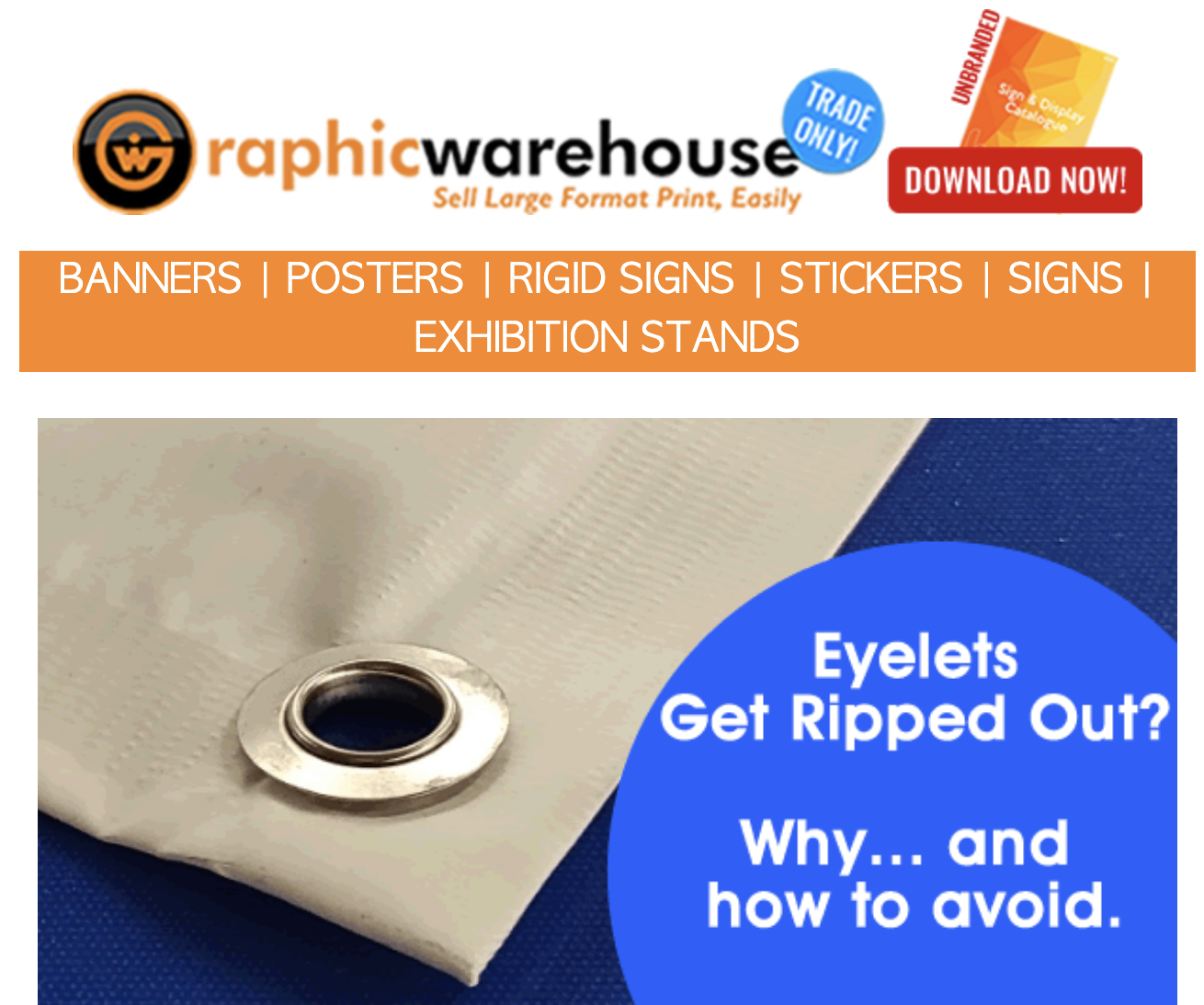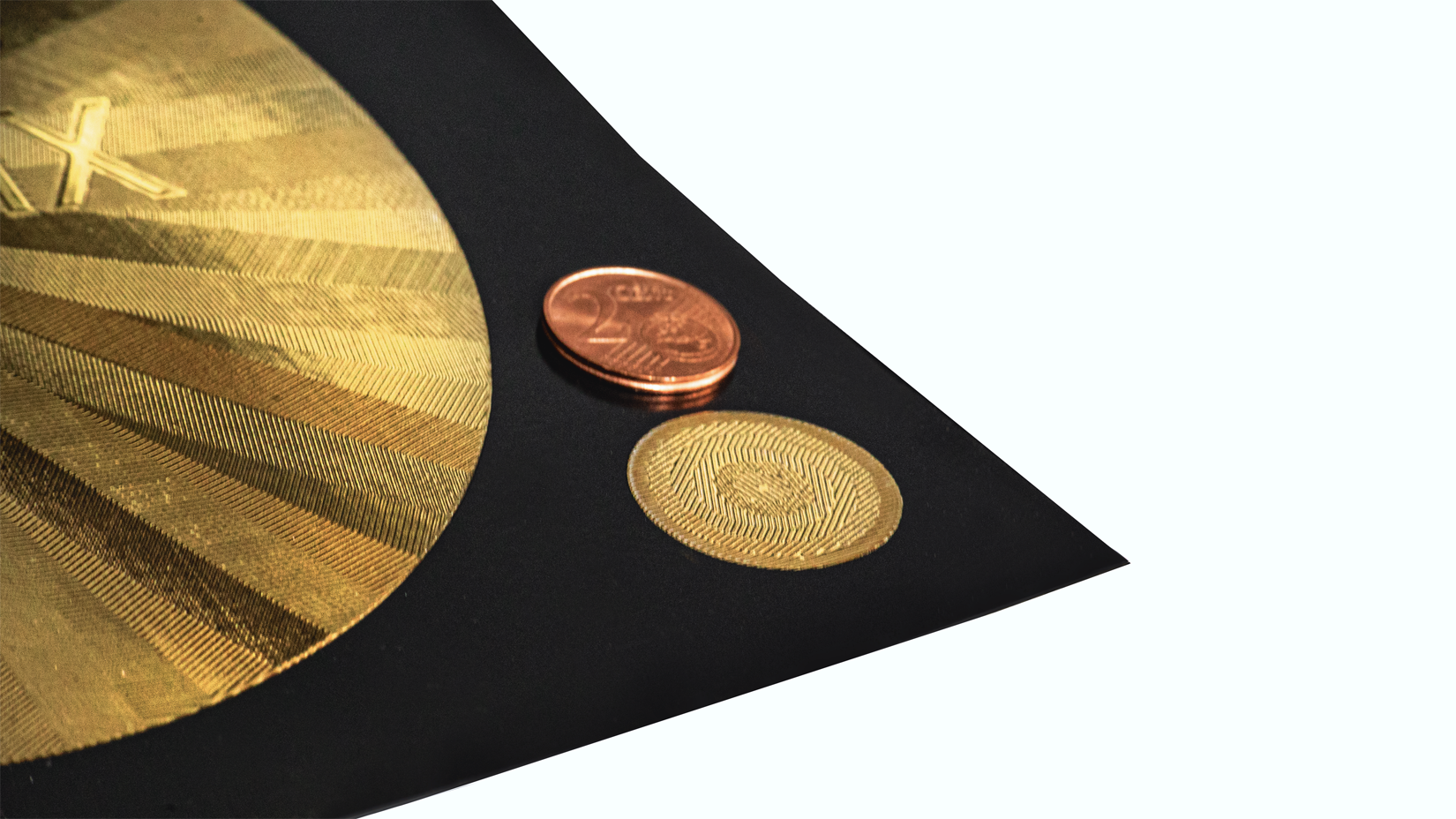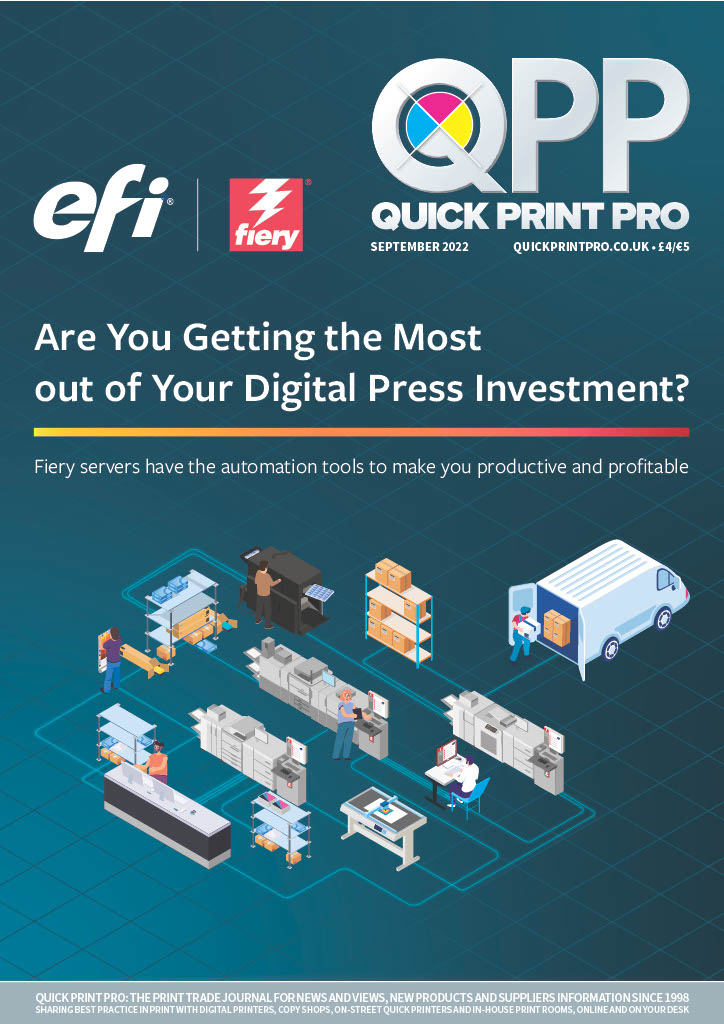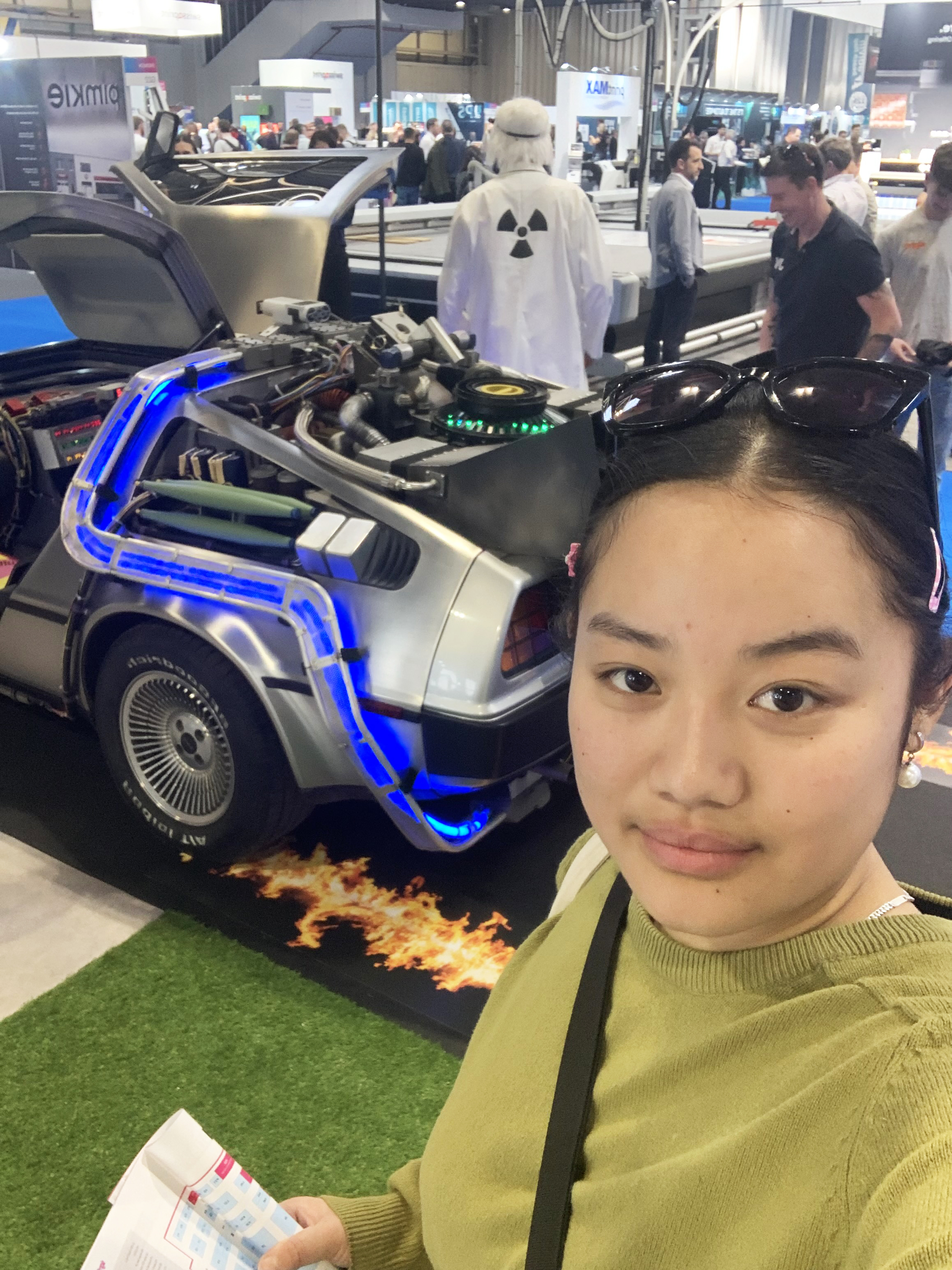I am not talking about flex faced banners, I am describing the banners we sell to our customers that are low cost advertising medium that gives our clients great bang for buck. Mesh Banner with reinforced rope Okay a bit larger than our usual banner but principle is the same… mesh with rope welded into the perimeter. Most banners are printed from 440gsm (grams per square meter) PVC with a polyester weave to reinforce the PVC and reduce ripping. The more or less PVC used will increase the weight, so sometimes you will find banner made in the grades 340 gsm and right up to 800 gsm. The most popular is 440 gsm. I’m getting to eyelets… but this is important! George Square double sided banners Glasgow’s George Square Double Sided Banners… 510 gsm banners, welded together to create a double sided banner with rope up each side and leather finished pockets! The banners above were specified in a tender contract and had to be made to this specification. The 510 gsm banner allowed more PVC for a better weld but the rope welded into the edge stopped the eyelets from being pulled out of the banner. So it’s not that your banner is poor? No, it’s not. Unless you go up to an 800 gsm banner, which your client won’t pay for owing to a significant price increase, then it’s best to use a medium gauged material. How are eyelets pushed into the banner? Eyelets come in 2 pieces, a male and female part. We use electronic and pneumatic eyeleting machines to set the eyelet. The machine feed a male part through a shuttle in to a placeholder and a hammer strikes the male part through the banner, piercing a hole. The female part in under the banner and a die folds the male around the female and BAM… an eyelet is born! So, the only thing that is holding the eyelet in place is the circumference of the eyelet to the material of the banner. This is why we hem banners. Hemming gives a 440gsm banner 880 gsm of banner material to grip. So, it’s not that your eyelets are rubbish? Nope. Our eyelets are nickel plated to reduce rust and can withstand a pull test that exceeds the requirement of printed PVC banners. So why do eyelets rip out? This is largely because they are hung using cable ties on railings. The cable ties do not stretch and the wind coming from the back of the banner will pull on the eyelets until they simply rip out. So how do we stop eyelets ripping out? There are a few options, and you are not going to like them all: Tell your customer to take them down in the wind. Personally, I’d put this in writing. Use Bungee or shock cord to attach them to a fence – You can buy this here. This is used for building wraps because the stretch of the Bungee Rope will allow less strain on the eyelets. Get rope welded into the hem, this will stop the eyelet from ripping past the rope. Use Printed Mesh PVC Banner to allow the air to flow through the banner but remember the less PVC in the material the less strength is in the fabric, so I would add rope to mesh that is going on a railing or scaffold. You can select this option in the drop-down Quick Quote system. See the below image: Banner with rope welded in to the hem Click here to see the drop down add the cost to your banner: Add rope to banners for reinforcement Conclusion: PVC Banners are a low-cost adverting medium that are designed to be temporary. If your customer wants them to last a long time, then consider the 4 points above. If I have missed something, or you think I am talking rubbish… let me know. richard@maticmedia.co.uk Graphic Warehouse +44 (0) 330 380 0172 info@graphicwarehouse.co.uk





-2022-10-17-17-37-37.jpg)
